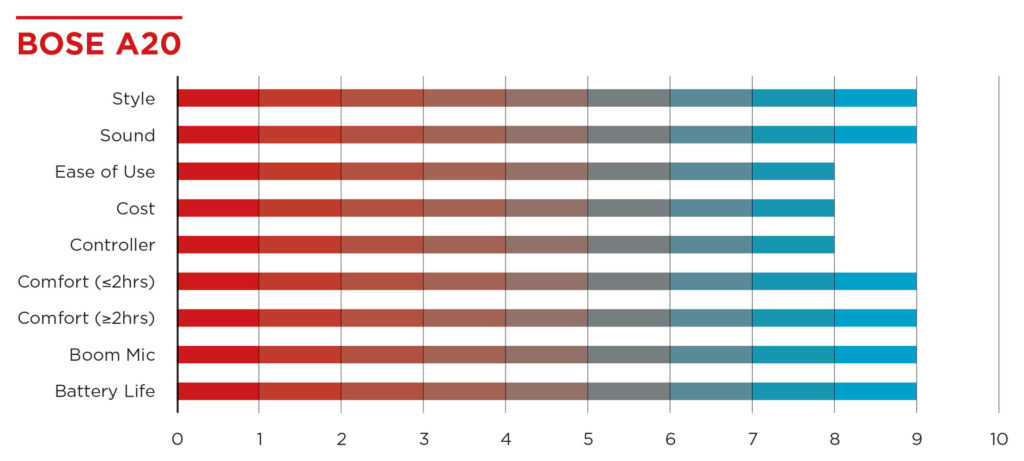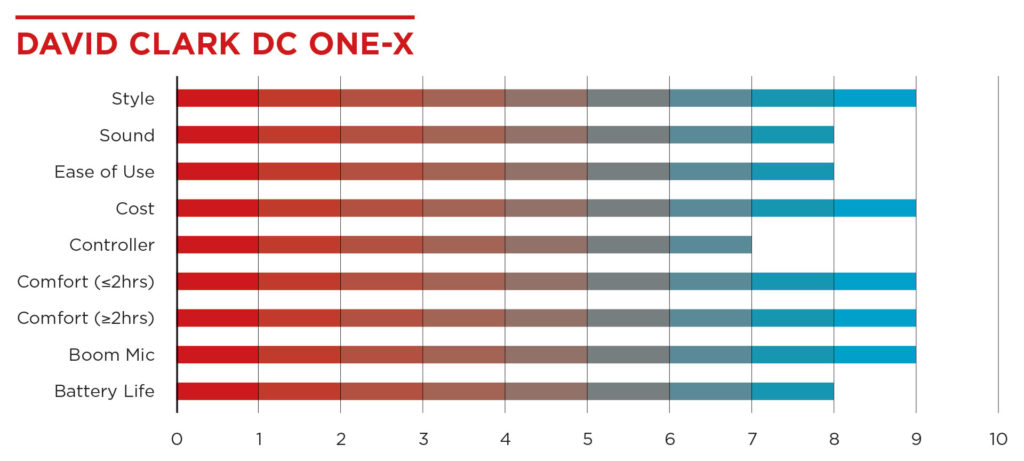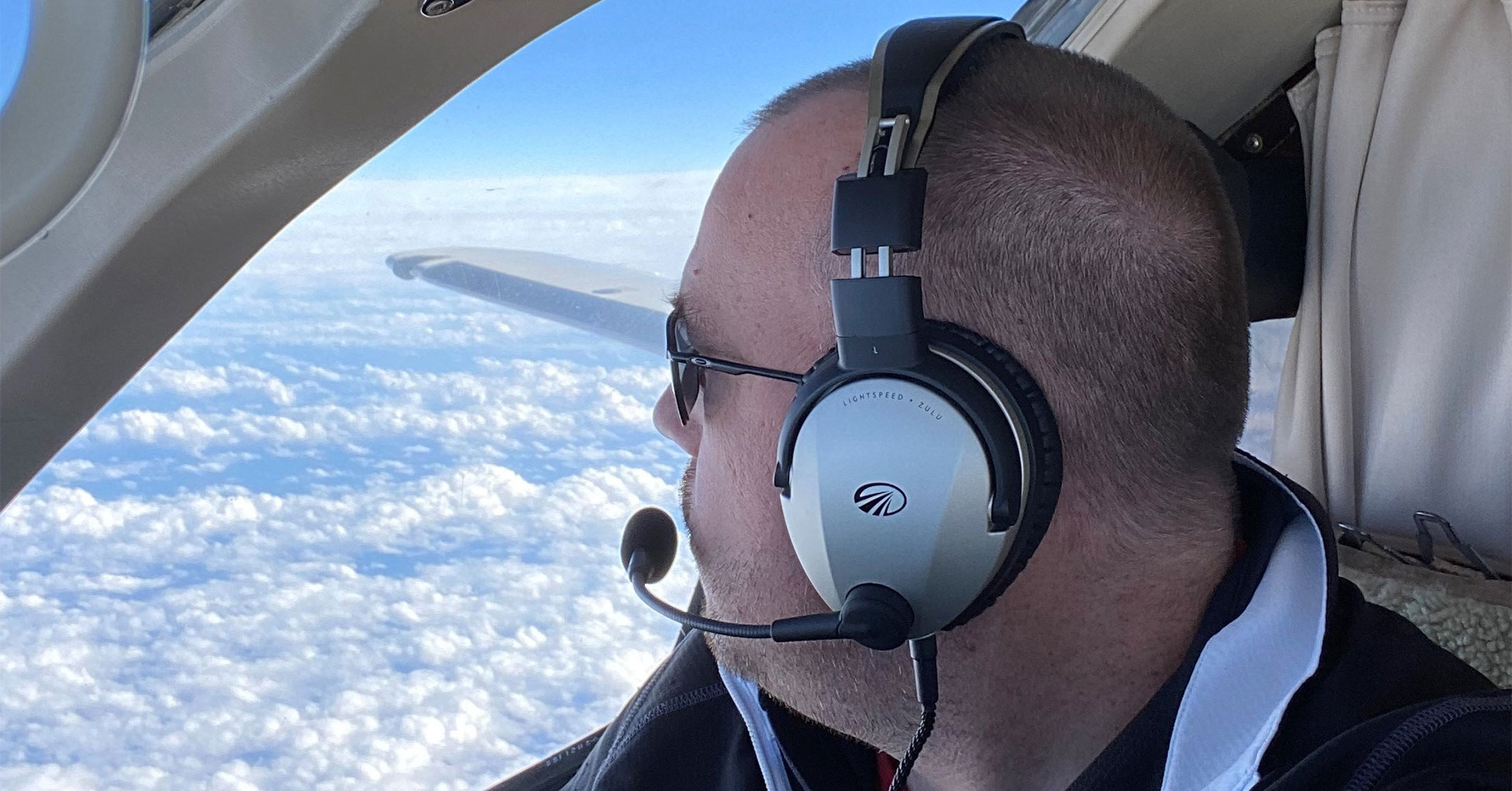Estimated reading time 13 minutes, 47 seconds.
Editor’s note: Private Air chief pilot, Adam Fuller, reviewed three leading aviation headsets over a two-month period — the Lightspeed Zulu 3, Bose A20, and David Clark DC One-X. Here are the results! (Find the headset score charts at the end of this article.)
Like most aviators, I dreamed of being a pilot since I was very young, around the age of four. Spending a hot summer weekend at Airshow London, Ontario, every year with my parents and friends sealed my fate.
Growing up in Kitchener, I had no idea I could actually make this fantasy a reality. I knew I wanted to be like “Maverick,” but I always thought being at the controls of an airplane was just a bit out of reach. I often kept my dreams quiet because I didn’t want someone to tell me I couldn’t do it. I was about 12 years old when my cousin came to visit from Ottawa for a family member’s wedding. He was several years older and a budding pilot himself. He opened the trunk of his dad’s blue Oldsmobile that was backed into our narrow driveway, and there it lay: safely resting on top of the luggage, the unmistakably cool aviation headset. It was like a beam of light sent directly from the heavens. I could have spotted those earcups and boom microphone from a mile away.
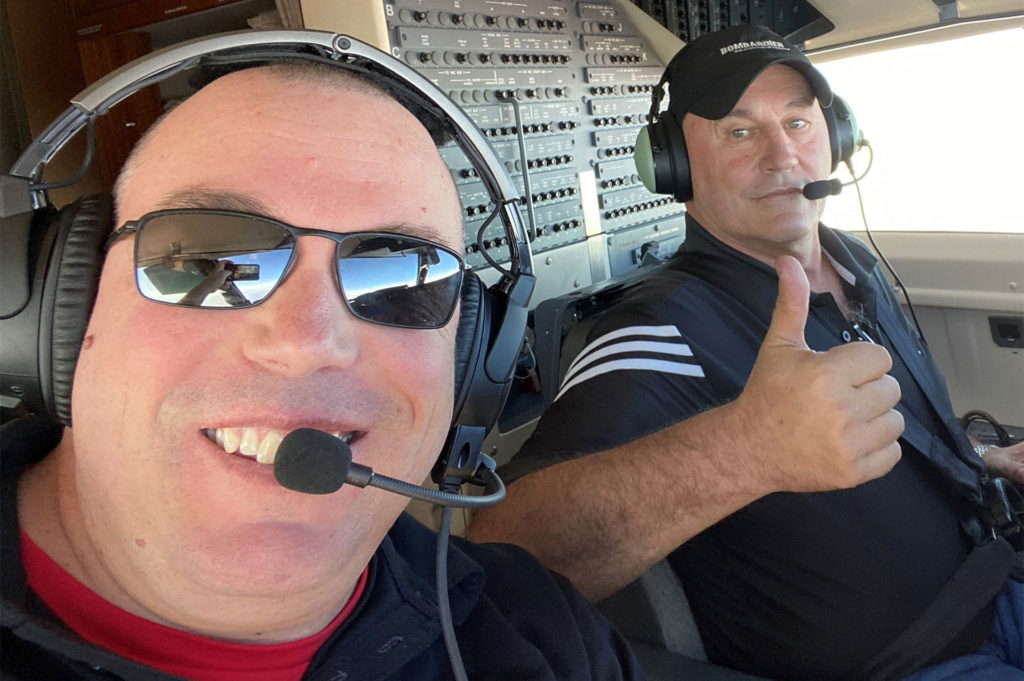
It was an epiphany of sorts; maybe this could be real. He relit my passion.
Thirty years later, I am the chief pilot of Private Air, a fast-growing charter and management company here in Ontario, experiencing the latest and greatest active noise reduction aviation headsets from Lightspeed, David Clark, and Bose.
The cool factor — the style, the look, the name — regularly overshadows the oft-forgotten importance of the “right” headset in the cockpit. Conversely, what lies behind the gel or foam-filled earcups and boom microphone is what symbiotically connects the pilot and airplane to the surface dwellers. That’s not to say functional isn’t cool, or cool can’t be functional. But the heart of the headset is what will set it apart.
For Christmas in 2000, I was given a David Clark H10-13.4 headset to be used for my ab initio training. In the early years of my career — when I could barely afford my mortgage — I purchased an original Lightspeed Zulu, and have also used various Bose headsets in several of the aircraft in Private Air’s current fleet. Each headset carries fond memories of various stages in my career.

Over the past few months, I have worn a Bose A20, David Clark DC One-X, and the Lightspeed Zulu 3.
For the most part, I have worn these headsets while at the controls of a Bombardier Challenger 605, but also in a Cessna Citation II and a Citation Ultra, with multiple legs and hours under each headset. Of course, the operating environment between these jets differs significantly. There is a noticeable dissimilarity between these aircraft in cockpit space available, noise, and distance to the jack plugs from the pilot seat.
With legs flown between 30 minutes and five hours during this review, comfort was a substantial consideration — especially when flying multiple legs each day. This is where the Bose, in particular, and the David Clark headsets really excelled. Admittedly, I have a big head (literally, not figuratively), and the clamp pressure at the ear cups becomes noticeable, very quickly.
Keeping a seal around the ears is necessary to prevent what Bose senior product manager, Matt Ruwe, refers to as “leak.” Each of the three headsets set about this in very different ways. The Bose A20 has a center pivot spring headband, which provides a constant force of pressure on the head at 450 grams of pressure clamping force. Whether you have a large cranium like myself, or a smaller hat size, the pressure will be the same. David Clark features a “fully adjustable suspension assembly” system that incorporates a solid, yet flexible, headband coupled with “swivel hinge stirrups to disperse clamping pressure” — which works exceptionally well. The Lightspeed Zulu 3 could improve in this aspect. Though the “tapered performance ear seals designed to hug the curve of the jaw for a natural fit,” with cup cavities that allow the entire ear to fit inside, are extremely comfortable, the side pressure in the Lightspeed Zulu 3 was conspicuously greater than either the Bose or David Clark. With eye-glasses, the side pressure was exacerbated. Whether you’re flying your weekend whip or your intercontinental business jet, that comfort level becomes increasingly more imperative in battling fit, fatigue, and focus for any leg over two hours.
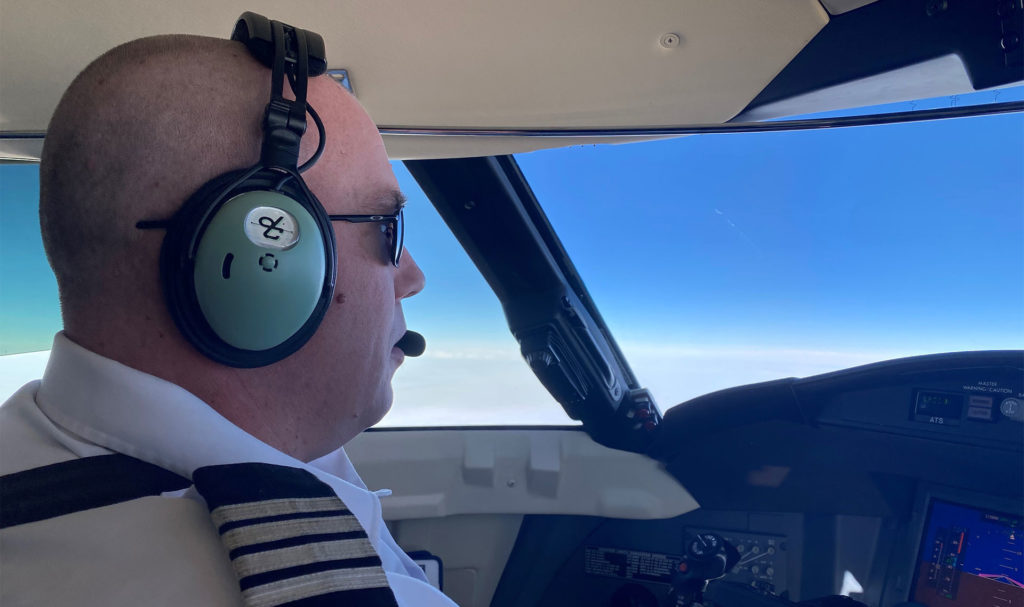
The Zulu 3, A20, and DC One-X weigh in at 14.6, 11.9, and 12.3 ounces respectively. Not a significant difference on paper, but a couple of hours into a long flying day, this becomes a perceptible variance.
Critical in any operation — especially in busy airspace found adjacent to most major cities around the world — is having a well-functioning, active noise canceling headset, even if the batteries were to die. The last thing any pilot wants is to lose or have severely degraded communications with air traffic control (ATC) during a critical phase of flight.
It is in this environment where the fellow non-engineers can see just how “active” the noise canceling technology is. While there is a noticeable decline in the clarity of transmissions with the added noise, all of the headsets continued to function to allow clear, yet slightly degraded, reception. When prompted, the ATC controllers had no definable decline in receiving transmission; the degradation was in the background noise within the headsets.
One very important headset setting is the auto-shut off. I discovered that this must be manually adjusted on the DC One-X headset after losing a couple of sets of AA batteries when the airplane sat for a few days. I think a standard auto-shut off feature on the DC One-X would be beneficial.

Each headset features its own unique way of controlling volume and ancillary functions, as well as connecting to the airplane. Of course, they all have the standard two-prong general aviation plugs, but they are also available with other plug options such as the single helicopter jack. All are Bluetooth capable, with auxiliary cable inputs, volume control, and various options for automatic muting or continuation of external devices.
On the first flight in the Challenger 605 from Tucson, Arizona, to Toronto, Ontario, the first thing I noticed was how heavy the Bose controller box is. The jack inputs in the Challenger 605 are located below the arm ledge area in the cockpit — unlike the much smaller Citations, which locate the jack plugs by the pilot’s elbow. This caused some pulling on the headset and made the shirt clip absolutely essential. But even so, you could still feel a tug. In the Citations, it’s a non-issue as the plugs are so much closer to the pilot — as is the case in many smaller airplanes.
When you change from the left seat to the right seat often (after every flight day as we do), the positioning of the boom microphone can become an issue. The Bose and Lightspeed headsets have dedicated left and right earcups. This makes the ear seals tighter than the David Clark. However, switching sides and keeping the microphone and, by extension, the cables to a comfortable spot on the outside shoulder of the pilot becomes an issue. David Clark is simple: flip the mic 180 degrees and continue on; but the “leak” definitely suffers.

There is a curious and cumbersome method to remove the mic section from the Bose headseat, which requires a small screwdriver and switching the boom mic assembly to the other earcup. This prevents any quick changeover in the cockpit, or results in having the cords run across your chest with a tug from the controller box. However, the headset design ensures the intended fit, feel, and sound quality expected from Bose.
While on the topic of cords and cables, the Lightspeed Zulu 3’s braided cable was a refreshing difference from the David Clark and Bose headsets, and a significant improvement over the earlier model of Zulu headset I previously owned. Its flexibility and light weight resulted in far fewer tangles. It was easy to forget the cable was even attached.
I had no issues with the microphones on the A20, DC One-X, and Zulu 3 headsets. Whether they were close to the mouth or several centimeters away, the communication within the cockpit and with ATC was always crisp and clear — as long as the foam was over the microphone.

After some light reading of the instruction manuals, an iPhone was connected to each headset, and music was played during non-critical phases of flight. (Each of the instruction manuals were extremely useful in helping me to utilize the full functionality and capabilities of the headsets.) The David Clark DC One-X took some time to connect to my device, but the Lightspeed Zulu 3 and Bose A20 connected immediately with no issues. Nonetheless, they all sounded very sharp and clear once connected and operated as expected.
The Bluetooth connection on the Bose A20 was actually designed around what senior project manager Ruwe referred to as the “golden curve” — attenuated for optimal music listening. The controllers allowed for music to either be muted for radio transmissions or continue playing in the background with the push of a button or flip of a switch.
In all three headsets, the volume control ranges from extremely quiet to nearly deafening. If you were flying a Boeing Stearman, sitting in an open cockpit behind a big radial engine, or maybe a Metroliner with Garrett TPE331 turboprop engines, this could be of some value. But in a business jet, this feature was immaterial — aside from fine tuning the perfect balance of clarity between the aircraft’s radio volume and the headset volume.

From a cost perspective, there is inherent value in these three noise canceling headsets. After operating an amphibious DHC-2 Beaver — and many other light aircraft — with a standard headset for my first 800 hours as a pilot, my hearing level continually thanks me for switching to a noise cancelling headset. The Canadian retail price points for the Bose, David Clark, and Lightspeed headsets, which were recorded at press time, are as follows:
Bose A20: $1,329.99 – $1,449.99
David Clark DC One-X: $1,199.99 – $1,399.99
Lightspeed Zulu 3: $1,095.99 – $1,235.99
Never have I understood the saying, “Buy the best headset you can afford,” more than in the past 11 years I have been wearing noise canceling headsets. You only get one set of ears. Damaged hearing is gone forever. The intrinsic value is not in the dollars and cents, but rather in the controllable quality of life inside and outside the flight deck. The cost of diminished hearing is immeasurable.
Whether you’re looking to fly a Bombardier Challenger, or fly your family to the dock at the cottage, costs can mount. Pilots generally don’t fly because they have to, they fly because they love to. One must not forget the love within; put value in yourself and your passengers’ well-being. The Bose A20, David Clark DC One-X, or Lightspeed Zulu 3 will do just that.
I am infinitely grateful for the day my cousin Clayton placed that beautiful headset into an impressionable 12-year-old’s hands. In 2014, my cousin, mentor, first aviation employer, and friend tragically passed away after a short, but aggressive, battle with leukemia. Little did he know how that small gesture made such an enormous impact on my life.
